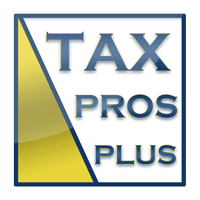The dictionary defines bookkeeping as:
The activity or occupation of keeping records of the financial affairs of a business.
It’s as simple as that, right? As a small business gets busy and gains sales it becomes difficult to keep correct records, to record all expenses and sales, and to reconcile the books at the end of a month or quarter.
If you read our previous blog, Bookkeeping 101: Basics of Bookkeeping, you will know there are a quite a few steps you need to take to set up your bookkeeping records the correct way.
First a small business should decide whether you will keep single or double entry books. Most small businesses with a low number of transactions use single entry bookkeeping.
The business should also whether to use cash or accrual accounting. Refer to our Bookkeeping 101 blog to learn more.
The small business should create a chart of accounts to decide what accounts it needs to establish. Planning this chart out before you actually begin balancing your books will save you a lot of headaches.
Next it is time to balance the books. The key formula or accounting equation to refer back to is Assets = Liabilities + Owner’s Equity. The two sides of this formula should always balance for your records to be properly maintained.
Finally, in the previous Bookkeeping 101 blog, we went over the financial statements a company will need to prepare including the Balance Sheet, Income Statement, and Cash Flow Statement. It is important for a business to prepare these every quarter so they can get a clear overview of the company’s finances and decide the budget for the next quarter.
In this Bookkeeping 102 Blog: Bookkeeping Basics Continued we will discuss accounting software a business can use to help keep track of their bookkeeping. We will also further discuss the different accounts you can establish to track moneys.
Bookkeeping Accounting Software
Do not feel you have to take on the great task of bookkeeping all on your own. Leverage the technology available to make the task simpler and easier for you to handle.
The most common accounting software in use is Quickbooks. Other accounting systems include NetSuite, FreshBooks and Xero. These systems are much easier to use than keeping ledgers by hand and writing down every single transaction. They will also save you a lot of time that you can instead spend making money for your business.
Tax Pros Plus offers training in Quickbooks and other accounting systems if you find you need help setting up your accounting software or maintaining your books. You can also outsource all your bookkeeping needs to Tax Pros Plus of North Charleston, South Carolina if you find that your time is better spent working on other tasks in your business versus handling your books. Give us a call at (800) 742-0TAX to see where we can fit in to help with your bookkeeping needs.
Accounts Payable
Accounts Payable (A/P) is the account where you will track your outstanding bills. You will record money that your business owes to others in this account.
A good practice for any business is negotiating the latest due date available for payment. You never know when you will have an emergency expenditure that you will need cash on hand for so negotiating with your vendors for the latest due date is advisable. If you can convince a vendor to give you net 90 versus net 30 then do it! You then will record that transaction as an Accounts Payable.
Accounts Receivable
On the other side of the previous transaction example, the vendor who gives a company a net 90 due date will record an Accounts Receivable. Accounts Receivable or A/R is where a company records outstanding money that is owed to you for the sale of a product or service. The vendor in the previous example cannot record cash because the payment has not actually been received yet but they are giving away inventory so another account must be recorded.
Cash Account
Cash is an easy account to understand. You record cash when your company physically receives or makes a payment. If you have recorded an Accounts Payable transaction then when the 90 day term is up and you physically hand a payment out to a vendor you will credit the Accounts Payable account for the transaction and debit the Cash account.
Inventory Account
An inventory account is where you record the movement of your inventory is dollar form. When you receive inventory into your warehouse you will need to record the dollar amount into your books. You will also record the sale of any inventory to show the inventory has been moved out of your location. If something were to happen to your inventory while on your premises, like theft or a fire, you will need documentation showing the dollar amount of inventory that is physically at your warehouse at any given time.
Summary
These are just a few of the accounts you will probably need to establish bookkeeping records for your business. Check our blog again later for more information on bookkeeping accounts a company can use to record transactions.
Once again if you have any questions about bookkeeping or accounting software, please contact Tax Pros Plus as we are happy to answer any of your questions. We also offer bookkeeping services at our office in North Charleston, South Carolina if you would like to outsource your bookkeeping needs.
